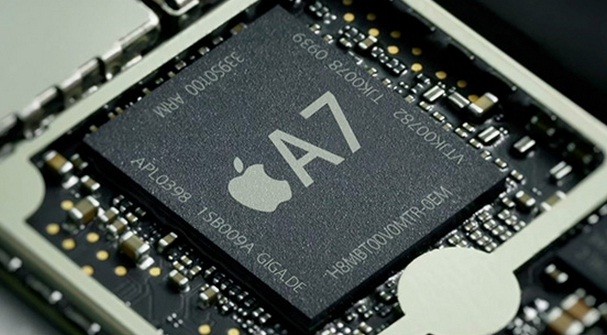
A Rainforest Posing as a Walled Garden
June 24, 2014At Apple’s Worldwide Developers Conference on June 6th, Apple CEO Tim Cook pointed out a statistic that challenges 30 years of popular opinion in the tech sphere. That statistic? Apple has 800 million users.
Since the introduction of the Macintosh in 1984, Apple was regarded as a boutique player making vertically integrated products for niche markets. It turned out what the world really wanted was cheap, undifferentiated hardware running a licensed operating system offering interoperable and compatible software.
Apple’s vision of a computer experience differentiated by design and human interface nearly came to an end by 1997. Apple’s walled garden where they sought to control the entire widget, had essentially failed. When Steve Jobs returned to Apple, it was 3 months away from insolvency.
With the return of Jobs, Apple doubled down and tripled down on a walled garden. Any economist or technologist worth their salt predicted Apple’s doom. On the surface, they seemed to have good reason. Take Apple’s switch to Intel processors in 2005 as a prime example: For years, the PowerPC CPU – the brain of the Mac – had fallen far behind the latest chips from Intel.
Because of the low volume of Mac sales, both IBM and Motorola couldn’t justify the R&D it would take to keep par with Intel. Apple simply wasn’t big enough to justify the investment required. So after years of working in secret, Apple ported Mac OS X to Intel’s X86 architecture.
That was Apple then. But like Tim Cook pointed out, that’s not the Apple of today; the most valuable and profitable company on Earth was built upon the iPod, iPhone, and iPad – not so much the Mac.
Where IBM and Motorola couldn’t justify their investment in the PowerPC processor, today, the biggest component manufacturers in the world compete fiercely for Apple’s business. Apple is the largest consumer of flash memory and semiconductors in the world. The scale of its purchasing power dictates global component prices for all its competitors big and small.
At the behest of Tim Cook in 2005, Apple spent $1 billion in cash (20% of their war-chest at the time) on pre-purchasing flash memory for the iPod. Apple’s walled garden approach suddenly had more purchasing power than everyone else combined.

The Apple A7 SoC
But on top of having the largest buying power for components, Apple has a long history of custom designing its own. Apple’s efforts in designing its own mobile CPUs are at the core of their entire business strategy.
Apple’s latest mobile CPU, the A7, is a desktop-class chip that’s perhaps 24 months ahead of anything Intel, Qualcomm, NVIDIA, TI, or Samsung has in store. Unlike its competitors, Apple doesn’t use chips made by 3rd parties. And unlike its competitors, Apple has invested billions in custom silicon both in terms of acquisitions and R&D spending. Most importantly, Apple has enough well-paying customers to get a return on that rather large investment.
Apple has been releasing major new versions of its A-series CPU every year since 2010. This trend continues with the A8, which is expected to ship this Fall. You know times have changed when you consider Apple’s had the most powerful mobile CPU in the world for the past eight months. There’s no 64-bit CPU in any other phone or tablet out there, and certainly no apps outside Apple’s app store which are 64-bit either. For all intents and purposes, there won’t be a collective response from Apple’s competitors during the first year of the A7 being on the market.
The business model that nearly killed Apple is now at the heart of why they have the only 64-bit mobile CPU on the market, and why the A7 outperforms every other mobile CPU. Vertically integrated mobile devices are rapidly supplanting the traditional PC market. Purchasing power has shifted from the corporate IT manager to the consumer. It’s that consumer demand which allowed Apple to invest so heavily in its own silicon.
When a walled garden grows into a rainforest, there’s a tipping point where the benefits of a closed system outweigh the benefits of an ‘open’ one. We’re crossing that point now where Apple’s custom designed silicon is not only better, but cheaper than anything else on the market.
Does that sound like the Apple you know?
Apple, the ‘niche player’, controls the global market for computer components. They have most powerful mobile hardware and have access to the most advanced technologies and materials before anyone else does. A closed business model affords Apple specific advantages that can’t be copied or replicated using off-the-shelf parts. Apple now has the scale for its custom components to compete against and outperform the entire market.
Apple can’t be described as a walled garden anymore. With 1 billion users, their closed system would be so large that it would take on the characteristics of a traditionally open one. Like a rainforest that creates its own weather, Apple has become an ecosystem unto itself. It’s a rather profound development because instead of entering existing markets with disruptive products, Apple may begin to create entirely new markets that prove far more difficult to disrupt.
Other posts by Chris Marriott
- Seeking Backstage Resellers
- Preemptive Multi-Talking -- Johnny and the Liquidators
- Preemptive Multi-Talking -- Pundits are the worst!
- Preemptive Multi-Talking -- WWDC 2016
- Preemptive Multi-Talking -- Of Cash Piles and Job Cuts
- Preemptive Multi-Talking -- 60 Scary Minutes Edition
- Preemptive Multi-Talking -- [R]Evolution Edition
- Preemptive Multi-Talking -- Pinocchio Edition
- Preemptive Multi-Talking -- FBI vs. Apple
- Preemptive Multi-Talking -- 1984 Edition
- Preemptive Multi-Talking -- Earnings Madness Edition
- Preemptive Multi-Talking -- All your passwords are belong to us.
- Preemptive Multi-Talking -- Fog, Fizzle, Flop Edition
- Preemptive Multi-Talking -- FUD Redux Edition
- Preemptive Multi-Talking -- Privacy be Damned Edition
